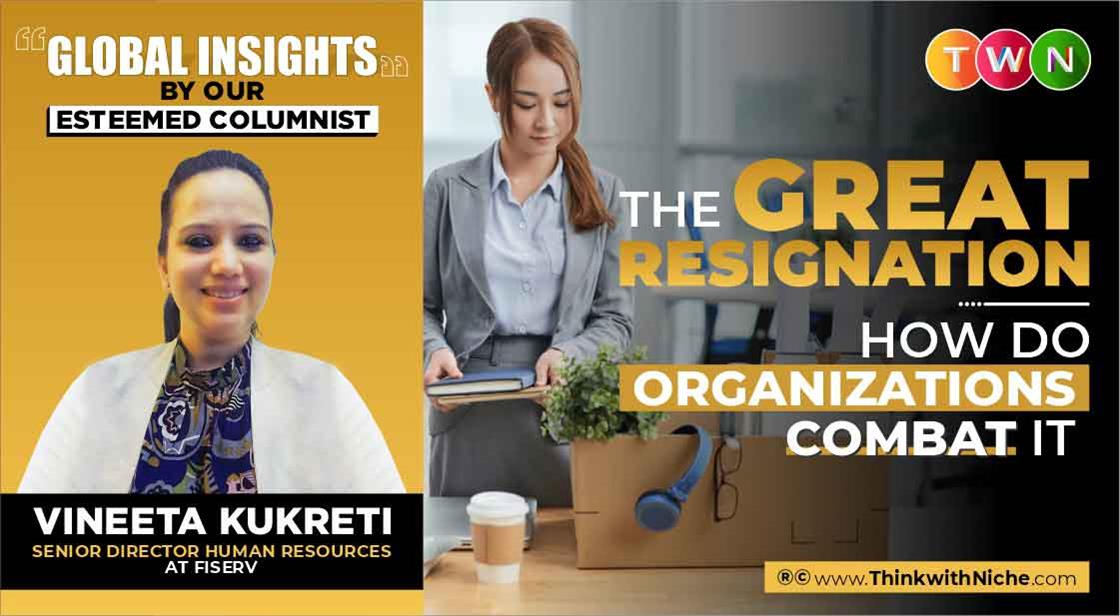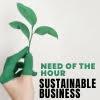The Great Resignation-How Do Organizations Combat it?

Blog Post
Decoding the great resignation where employees quit their jobs at record rates has been a key priority for organizations and researchers in the recent past. Economists believe the root cause to be the drastic changes that corporates were forced to introduce during the pandemic. This led to collective employee exhaustion and burnout leading to emotional and mental stress. #TWN
“According to Microsoft's 2021 Work Trend Index, more than 40% of the global workforce were considering quitting their job in 2021. According to a PricewaterhouseCoopers survey conducted in early August 2021, 65% of employees said they were looking for a new job, and 88% of executives said their company was experiencing higher turnover than normal. A Deloitte study published in Fortune magazine in October 2021 found that among Fortune 1000 companies, 73% of CEOs anticipated the work shortage would disrupt their businesses over the next 12 months, 57% believed attracting talent is among their company's biggest challenges, and 35% already expanded benefits to bolster employee retention.”
With the pandemic setting in, organizations were compelled to go on a path of the digital-first journey almost overnight. It saw a steep demand for tech workers across the world. The health care industry also witnessed a steeper churn than the previous years as the space saw a huge transformation and extended hours of work. These two industries primarily saw a steep demand resulting in piled-up workload and employee burnout. On the contrary, industries such as manufacturing, food & hospitality, and entertainment witnessed a resignation plateau. Organizations continued to explore automation as well as international gig opportunities to fill the talent gap. Millions of workers now have access to roles that were earlier geographically off-limit. Increasingly organizations are adapting their business model to hybrid or offering higher salaries to attract talent in a competing talent market. As the majority of the organizations are yet working through their working policies, the employee shuffle would continue in the near future too.
Resignation rates are highest amongst the mid-career employees with experience of 5 to 10 years. It is driven by the fact that employers believe that freshers or employees with little experience may find it difficult to settle in an environment that lacks physical connection, mentorship, and real-time training. The demand for mid-career employees is a safe bet and on the rise. Mid-career employees are also re-evaluating their work-life goals, having lived through a stretched phase of being overworked and burnt out. In multiple economies, the older workers chose to take early retirement as their finances were largely taken care of. The world also saw the secondary earning members in the family bid farewell to work to take care of home and children. The lockdown gave people the opportunity to re-imagine what normal life should look like.
Is it then safe to say that the great resignation is a general strike? Is the big quit an expression of resentment?
The pandemic had allowed employees to rethink their long-term goals, evaluate what's most important to them, deliberate on the preferred work conditions and realize the importance of work-life balance during a time when life was most important. As more and more organizations summon employees to return to the office, employees continuously strive to desire schedule flexibility and freedom to remote work. Many are looking at venturing into industries and areas where they have no prior experience. The present being a Startup era, employees have a choice to join existing start-ups as the demand for specialized skills is on the rise within start-ups. Start-ups are bullish in hiring from colleges and experienced workforce alike. More and more experienced professionals are quitting their day job to set up their own start-ups with easy capital as well as start a friendly ecosystem currently being available.
Economics predicts that the labor market will continue to force companies to spruce up their salary as well as the benefits offered in the war to win the best talent. More and more companies are offering a welcome bonus to ensure low dropout ratios. Increasingly organizations are considering shorter and more flexible workweeks as a standard way of working. The cost of living in smaller cities is a lucrative impetus for employees to work remotely. They have a better chance of owning a big house in a small city versus renting a small apartment in a big city. Large organizations are also moving to smaller cities to not only align with the trend but also support small businesses and start-ups.
To combat the labor shortage created by the great reshuffle, more and more organizations are accelerating their automation journey as well as contemplating outsourcing partners to mitigate the business continuity challenge.
Given the current trend of attrition will continue, what should corporates do to combat it?
- Provide top talent with lateral mobility opportunities supported by business leaders and human resources in a targeted and streamlined fashion. Providing international mobility or enlargement of role to represent a global role also provides top talent learning opportunities, thereby reducing the risk of losing the talent.
- Strengthening the company culture to demonstrate fairness, equality, flexibility, engaging work environment that strengthens the peer-to-peer and individual-to-company connection.
- By building a corporate brand that is compelling to both internal employees as well as external candidates. Making existing top talent employees brand ambassadors of the organizational culture would significantly enhance connection.
- Making employee mental wellbeing a priority by infusing flexibility and policies to support this
- Investment in progress and continuous talent development, thereby giving employees a learning journey, is imperative to building a high impact and high retention environment.
- Building connection - When existing employees relate to the vision, mission, values, and service that the organization delivers to the community, they have a greater chance of staying. If employees feel what the organization promotes externally is mirrored through internal practices, the sense of belonging deepens through respect for the brand.
- Employee enthusiasm could be the differentiating factor and competitive advantage for the brand fueled by employee care, recognition, and fairness.
- Allowing flexibility to employees to work in self-directed teams with predictable work schedule hours.
- Invest in robotics and artificial intelligence to reduce hiring time and cost. It has a positive impact on the otherwise stretched existing team that is operating as a sub-optimal team strength in high-attrition teams.
- Create a culture of recognition by driving innovation projects. Organizations must invest in employee ideas that go beyond revenue creation and more towards generating value for the firm in simplifying day-to-day employee transactions.
- Increasing alumni outreach could potentially increase the chances of hiring from the market.
- Increasing college affiliation and building engagement early on could be another time-tested mechanism to steady the supply funnel.
From “work comes first” to “life comes first” is the significant message that corporates need to understand. The pandemic may, in the end, have a silver lining where after reshuffling employees, land up in places that gives them an opportunity for a better quality of working lives by choosing career paths that best suit their needs.
The world of work would eventually be more stable than ever before.
You May Like
EDITOR’S CHOICE












